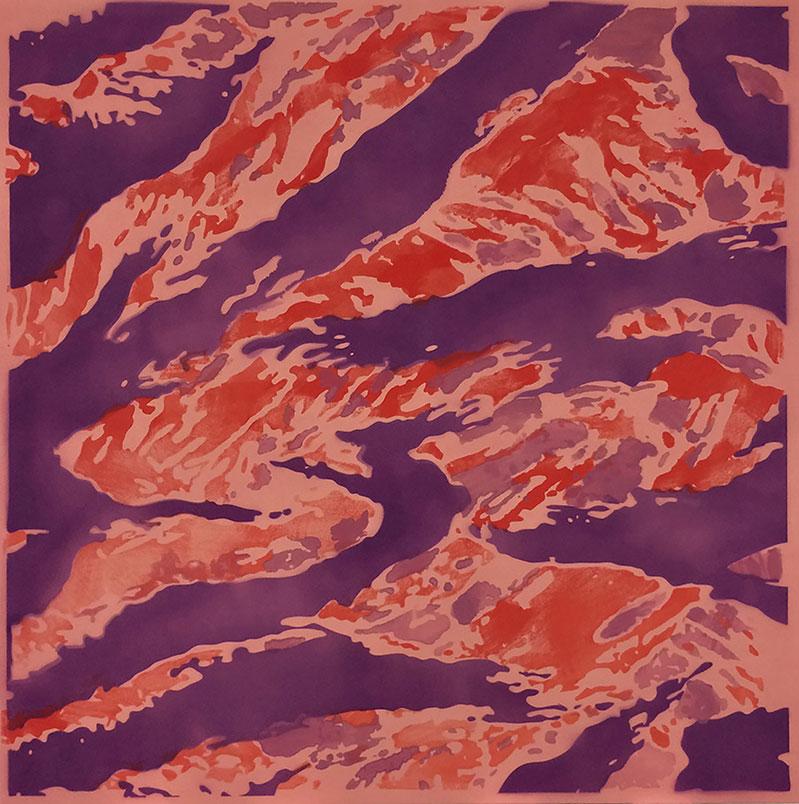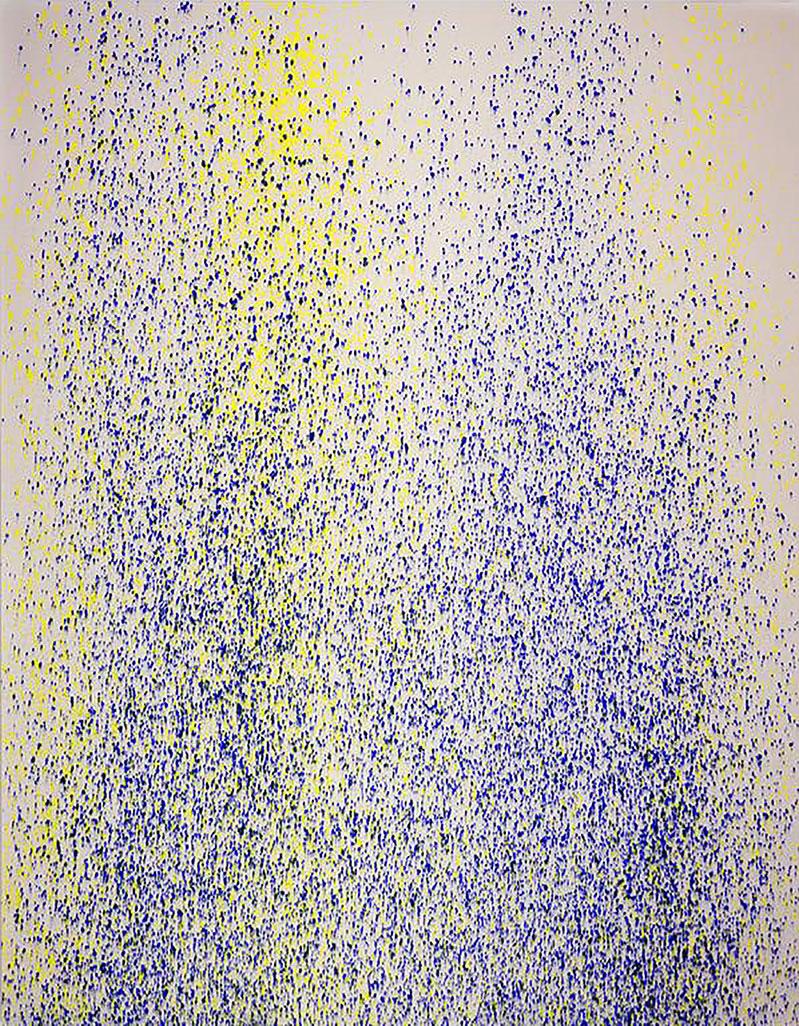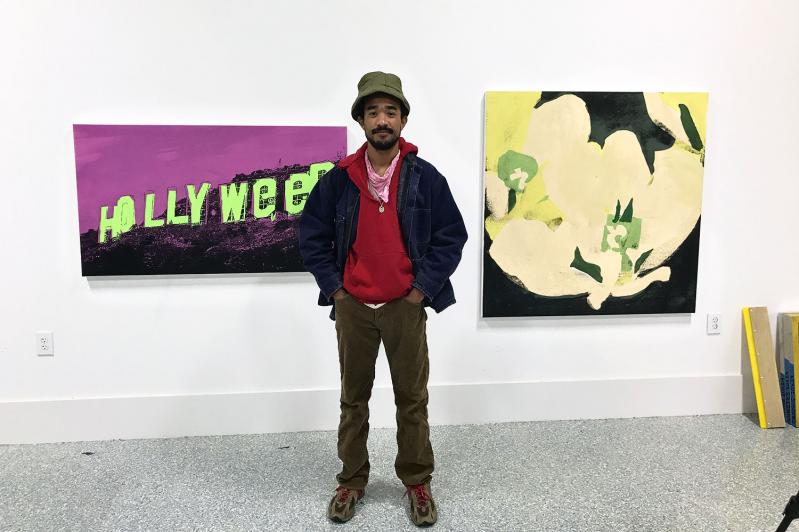It was April 1, 2007, when Lucien Smith received a phone call telling him he had been accepted into Cooper Union's B.F.A. program. "I thought it was an April Fools' Day joke and I hung up," he said during a conversation in his East Hampton studio. Fortunately, the woman called back and convinced him she was serious. "I had never won anything in my life. I felt like I had gotten the golden ticket."
Little did he know then how true that was. Four years later, Jeanne Greenberg Rohatyn, owner of the gallery Salon 94, purchased a painting from Mr. Smith's senior thesis show, and his career skyrocketed from there. That monumental painting, which recreates a scene from an animated Winnie-the-Pooh film into a leaf-strewn landscape, sold at auction two years later for $389,000.
But that is only a small part of the 31-year-old artist's story, which has taken him from "wunderkind," as The New York Times called him, through exhibitions at major galleries while still in his early 20s, some inevitable blowback, a break from New York and the gallery system, a move to Montauk in 2015, and the creation of STP (Serving the People), a nonprofit commission-free platform for artists, including Mr. Smith, to show and sell their work.
Of that senior show at Cooper Union, which was titled "Imagined Nostalgia," Mr. Smith has said, "I wanted to create objects from a childhood I never experienced firsthand." He was born in Los Angeles in 1989, where his mother had family, but his early childhood was spent "going to whoever could take care of me the best." He estimates he attended 13 or 14 different schools before college, including stops in Scarsdale, N.Y., Secaucus, N.J., and Baton Rouge, La.
He graduated from Santa Monica High School, where one teacher "opened up a perspective on the arts. I never really knew you could have recognition or a career in the arts while being alive. For me it was Basquiat and Jackson Pollock."
While at first uncertain about where it would ultimately lead, he applied to art schools. In part because of an uncle who was an architect and had worked with Richard Meier, he thought his career might "somehow involve society and creativity. Saying that now, it's interesting that those words have become something I live by."
It was at Cooper Union that his ambition gained focus. In his sophomore year he decided "if I could dominate everyone around me in this atmosphere, I could dominate everything else. I approached art in a competitive way. And the rest is kind of like history. Everything just happened."
"Everything" included, besides the rapid appreciation of the market value of his work, solo exhibitions in New York at Half Gallery, the Suzanne Geiss Company, Salon 94, and Skarstedt Gallery. It also included some 200 "Rain" paintings made by spraying large canvases with a paint-filled fire extinguisher while living in upstate New York for a year. Seven of those were shown at OHWOW Gallery in Los Angeles in 2012.

Other exhibitions included "Scrap Metal" at Bill Brady Gallery in Kansas City in 2013. For that show Mr. Smith visited the site of the Knob Creek Machine Gun Shoot in Kentucky and appropriated propane tanks, oil drums, automobile parts, and a pickup truck, all shattered by thousands of rounds of ammunition before being transported to the gallery.
That same year, at Suzanne Geiss, he presented "A Clean Sweep," which was about "the Giuliani gentrification era in New York and sweeping away the history and culture of the city to make way for this outdoor shopping mall we see today." The exhibition included photographs of public spaces in the city, wrinkled newspapers, and an army of freestanding brooms.
"Tigris," his 2014 show at Skarstedt Gallery, featured 11 canvases onto which he poured washes of paint to create the "tiger stripe" camouflage patterns developed by the South Vietnamese forces in the 1960s.

From these few examples, it's clear that no subject or medium is out of bounds for Mr. Smith, although he was most often associated with the "Rain" paintings because of their success and, perhaps, subsequent backlash from some critics.
Validation of the series has come with the Parrish Art Museum's current exhibition "Southampton Suite," which features 10 "Rain" paintings created outdoors in Southampton in 2013.

It was in 2014 that "I had this sort of criticism for being a sellout artist and having this roller coaster of a career. It was a crossroads for me. I could continue to make art for people who, at least to me, didn't seem to want me to be making art, or I could just go and start to think about art in a different way."
A big part of that "different way" is STP, which started in 2015 and attained its nonprofit status two years later. "STP was my way of working with other artists, which is something I was always really interested in." He said STP is constantly evolving, ever more so during the pandemic, as virtual platforms have become crucial to artists and arts organizations.
According to its mission statement, STP aims "to facilitate innovative conversation through the intersection of art and culture. Our goal is to provide an alternative platform for creative inquiry and experimentation." At present the site features approximately 200 individual artworks by dozens of artists, many of them already sold.
Its 21 virtual exhibitions include "BFA Show 2020," which received submissions from 93 art schools around the world. "My own senior show was so pivotal to my career that I couldn't help but try to figure out a way to help other students have those moments" at a time when colleges were closed due to Covid-19.
Mr. Smith doesn't have a studio in Montauk. He was working in his garage and outside of his house until he recently rented a studio in an industrial building just off Springs-Fireplace Road in East Hampton. While he has been in exhibitions since leaving New York City, he no longer has a gallery affiliation. "I always wanted to leave the gallery system, but I was always tied to it because of money. So at a certain point I just severed it. It's such a hard and scary thing to do."
While it works for some people, "I want to offer an alternative, a new system," he said. He noted there are many innovative models of incubators for art, among them Black Mountain College and the alternative spaces that blossomed in New York during the late 1960s and '70s.
Of STP he said, "We're not the first people to think outside the box when it comes to art, commodity, and commercialism, but we're the ones carrying the torch now. I hope we can be the giant on whose shoulder people will stand in the future, just as we are standing on the shoulders of others."
Mr. Smith continues to make art out of both desire and necessity. While he intends to establish a board for STP and embark on fund-raising, so far he is its primary backer.
Much of his most recent work, whether representational or abstract, involves underpainting with silkscreen and inkjet on canvas. His new process owes a lot to Andy Warhol, who "brought mechanical reproduction into the art practice as far as using printmaking techniques not to create editions but to create unique works."
Some of his latest works use found images such as a photographs of human remains, a tornado's destruction, or a Greek temple. His "Flood" paintings from 2019, three of which belong to the Parrish Art Museum, are abstract, while his tulip paintings from the same year straddle representation and abstraction.
"I've started now to paint not only from images I find, but I'm interested in portraiture and taking moments from my life and things I'm witnessing and bringing them into this perspective for other people to see. I've come up with a process that can lend itself to both figurative and abstract forms. And that for me was always something I was searching for."
Of his 10-year-career, which has had an unusual degree of volatility, he said, "All the things that happened back then, whether they were good or bad, have led me to this moment of peace." And of starting STP, "I took a leap with secure footing. It definitely took a toll, it took some time from my life to secure, but it was a battle worth fighting. I'm in a much better place than when I was with a gallery and financially dependent on that system."



